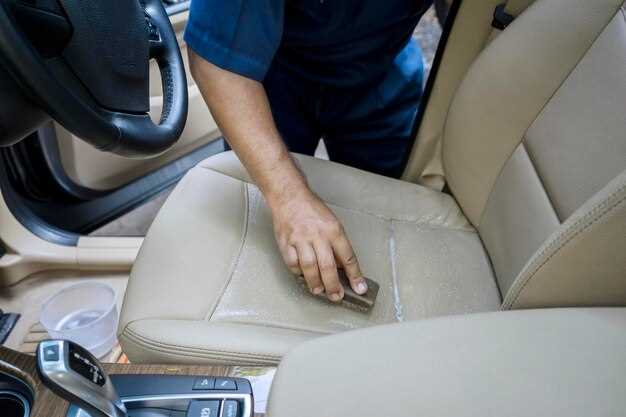
Leather seats are a luxurious addition to any vehicle, providing both comfort and style. However, to maintain their pristine condition, proper care and maintenance are essential. Over time, exposure to sunlight, dirt, and spills can lead to discoloration and deterioration if not addressed promptly.
Understanding the unique properties of leather can significantly enhance its longevity. Unlike other materials, leather requires specific products and techniques to ensure it remains supple and vibrant. Regular cleaning and conditioning will not only preserve its appearance but also protect it from cracking and fading.
In this guide, we will explore effective strategies to keep your leather seats looking as if they just came off the showroom floor. From routine cleaning methods to recommended protective treatments, mastering the art of leather seat maintenance will ensure that your investment stands the test of time.
Choosing the Right Cleaning Products for Leather Care
Proper maintenance of your leather seats starts with selecting the appropriate cleaning products. Not all cleaners are suitable for leather, and using the wrong product can lead to damage or deterioration over time. It’s essential to look for pH-balanced cleaners specifically designed for leather care to ensure safe and effective cleaning.
When choosing a product, consider whether it is a cream, spray, or wipe. Creams often provide deep conditioning while cleaning, making them ideal for regular use. Sprays can be convenient for quick clean-ups, whereas wipes offer ease of application when you need instant results. Regardless of the form, always verify that they are free from harsh chemicals, such as ammonia or bleach, which can strip oils from the leather.
The use of a conditioner is equally important in your leather care routine. After cleaning, a good conditioner helps maintain the natural oils and prevents cracking, thus extending the life of your leather seats. Look for products that include natural ingredients like lanolin or beeswax, which nourish the leather while providing a protective barrier.
Additionally, consider the specific type of leather in your vehicle. Some products are tailored for treated or untreated leather, and using the right one can enhance the care and longevity of your upholstery. Before applying any product, it’s wise to perform a patch test on a small, inconspicuous area to ensure compatibility.
Ultimately, investing time and effort into choosing the right cleaning products will pay off by keeping your leather seats looking brand new for years to come. Regularly scheduled cleaning and conditioning with the appropriate products will protect your investment and maintain the luxurious appearance and feel of leather.
Step-by-Step Guide to Conditioning Leather Seats

Conditioning leather seats is essential for maintaining their appearance and prolonging their lifespan. Follow this step-by-step guide to ensure your car’s interior remains in pristine condition.
Begin the process by gathering the necessary materials. You will need a leather cleaner, a high-quality leather conditioner, a microfiber cloth, and a soft brush. Make sure that the leather cleaner is suitable for your specific type of leather.
Next, remove any debris from the seats. Use the soft brush to gently sweep away dust and dirt from the surface and crevices of the leather. This initial step is crucial as it prevents scratches during the conditioning process.
After cleaning the seats, apply the leather cleaner using a microfiber cloth. Work in small sections to ensure even coverage. Gently wipe the surface to remove any built-up grime and oils. Rinse the cloth regularly to avoid spreading dirt back onto the leather.
Once the cleaning is complete, allow the leather to dry completely. This usually takes about 15-30 minutes. Ensuring the surface is dry helps the conditioner penetrate more effectively.
Now it’s time to apply the leather conditioner. Squeeze a small amount of conditioner onto a clean microfiber cloth and apply it to the leather using circular motions. This technique helps the product absorb deeply into the material.
Give extra attention to high-wear areas, such as the seats’ bolsters and armrests. The conditioning not only maintains the leather’s suppleness but also adds a protective layer against future wear and tear.
After applying, let the conditioner sit for the time specified by the product instructions. This waiting period allows the conditioner to saturate the leather fully for optimal results.
Finally, buff the seats with a dry, clean microfiber cloth to achieve a smooth finish. This will remove any excess conditioner and leave your leather looking refreshed and protected. Regular maintenance, including conditioning every 3-6 months, will keep your interior looking brand new.
Preventative Measures for Long-lasting Interior Maintenance

Maintaining the pristine condition of leather seats requires careful attention and proactive measures. Here are several strategies to ensure your car’s interior remains in excellent shape over time.
Regular Cleaning: Establish a routine cleaning schedule to prevent dirt and grime from accumulating on leather surfaces. Use a soft brush or microfiber cloth to gently remove dust. For deeper cleaning, employ a pH-balanced cleaner specifically designed for leather.
Conditioning: Leather can dry out and crack if not properly conditioned. Apply a high-quality leather conditioner every six months to nourish the material, enhance its flexibility, and prevent premature wear. Ensure the product is suitable for your type of leather to maintain its integrity.
Sun Protection: Direct sunlight can cause fading and drying of leather seats. Whenever possible, park in shaded areas or use sunshades to reduce UV exposure. Consider investing in window tints to provide additional protection.
Avoid Sharp Objects: Be mindful of items that can scratch or puncture the leather. Avoid placing sharp or heavy objects directly on the seats. Always store such items securely to minimize the risk of damage during transportation.
Spillage Management: Accidents happen, but prompt action is crucial. Immediately blot spills with a clean cloth to absorb liquid before it seeps into the leather. Avoid rubbing, which can spread the stain or worsen the damage. Use a specialized leather cleaner for any stains that persist.
Temperature Control: Extreme temperatures can be detrimental to leather interiors. Avoid exposing your vehicle to excessive heat or cold for prolonged periods. Maintain a stable climate within the vehicle by using air conditioning and heating systems effectively.
Regular Inspections: Routinely check your leather seats for signs of wear, such as cracks or fading. Early detection allows for timely repairs or treatments, preventing minor issues from escalating into substantial damage.
By implementing these preventative measures, you can significantly extend the life and appearance of your leather seats, ensuring they remain as luxurious and vibrant as the day you purchased your vehicle.




